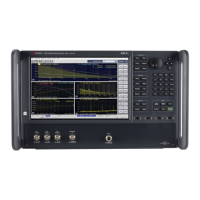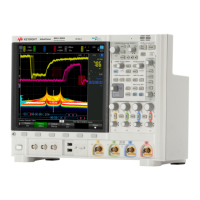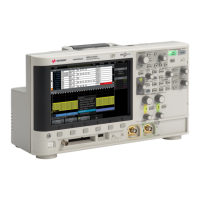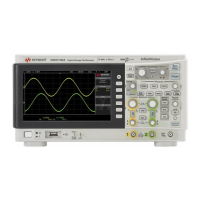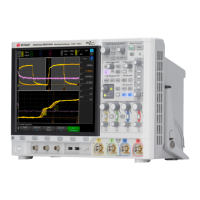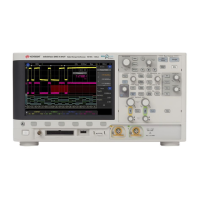Keysight EXG and MXG X-Series Signal Generators User’s Guide 383
Using Avionics VOR/ILS Softkeys for N5171B/72B and N5181B/82B with Option 302
Using ILS Glide Slope Softkeys
To set the ILS Glide Slope phase of the down signal relative to the up
1. Press Aux Fctn > Avionics > ILS Glide Slope
2. Press Up/Down Phase
(Default <value> is 0.00 deg.)
3. Select a <value> from 0.00 deg - 360 deg and press Enter.
These softkeys set the phase of the Down (150 Hz) ILS Glide Slope signal
relative to the Up (90 Hz) ILS Glide Slope signal.
To set the ILS Glide Slope DDM polarity to fly up or fly down
1. Press Aux Fctn > Avionics > ILS Glide Slope
2. Press DDM/SDM
3. Press Fly Up | Down
(Default selection is Up.)
4. Select either Up | Down
The ILS Glide Slope enables a pilot to adjust the aircraft up or down correctly
during landing.
The ILS Glide Slope provides signals that indicate whether an aircraft is above,
below, or in-line with the glide path to the runway and enables a pilot to adjust
the aircraft Up or Down correctly during landing.
This is the same type of information as provided by the ILS Localizer, but for
the vertical reference rather than the lateral/horizontal reference; the same
modulation and antenna techniques are used.
This vertical adjustment is performed using two AM signals with an AM depth
of 40% operating at a carrier frequency range between 329.90 to 334.70 MHz.
For aircraft approach, the upper signal is modulated at a frequency of 90 Hz
AM by default, and the lower signal is modulated at a frequency of 150 Hz AM
by default.
The primary mechanism which makes it possible for a pilot to obtain guidance
to a runway is the aircraft receiver's ability to detect the “Difference in Depth of
Modulation (DDM)” between the 90 Hz AM modulation and the 150 Hz AM
modulation.
DDM is defined to be the “percentage modulation depth of the larger signal”
minus the “percentage modulation depth of the smaller signal”,
divided by 100.
DDM = [AM(90 Hz)% - AM(150 Hz)%] / 100
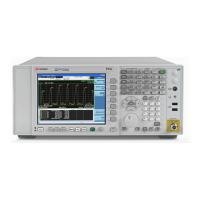
